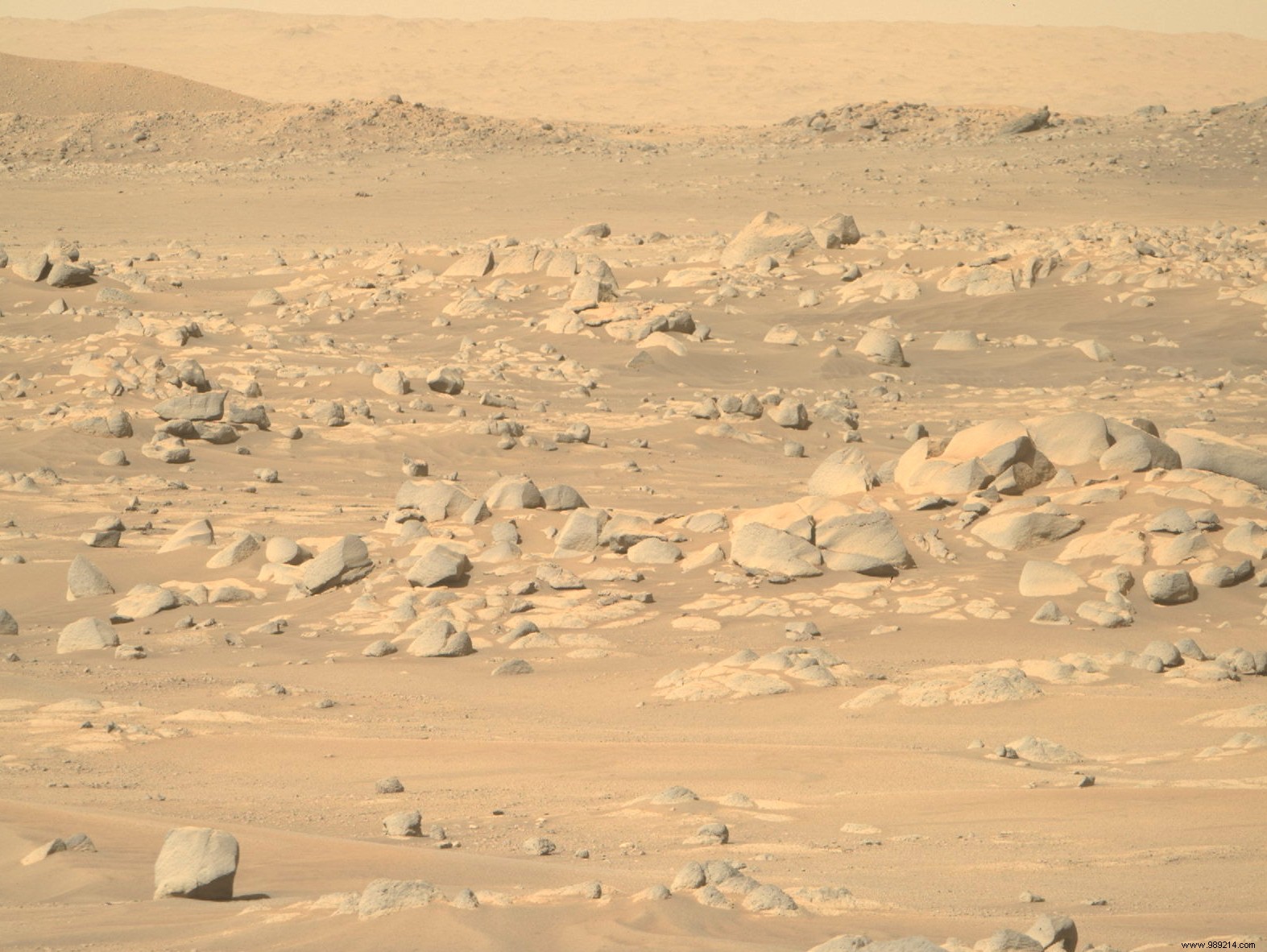Analysis of several Martian meteorites suggests that Mars' subsurface could be a good place to search for possible current life on the Red Planet. When is a drilling operation? Details of the study are published in the journal Astrobiology.
On Earth, the vast majority of living beings need sunlight to develop and evolve, but there are organisms in the depths capable of doing without it. To survive, these creatures rely on the byproducts of chemical reactions produced when rocks come in contact with water.
One of these reactions is radiolysis . It occurs when radioactive elements in rocks react with water trapped in its pores. The water molecules are then broken down into their constituent elements, namely hydrogen and oxygen. The released hydrogen eventually dissolves in the remaining groundwater, while minerals like pyrite absorb oxygen to form sulfate minerals.
Microbes can ingest dissolved hydrogen as fuel and use the oxygen stored in sulfates to "burn" that fuel. For example, at the bottom of the Kidd Creek mine, in Canada, some of these creatures have been isolated more than 1.5 km underground in water that had not seen the light of day for more than a billion years.
As part of his doctorate, Jesse Tarnas and his team at Brown University sought to better understand these subterranean systems with the aim of finding out if similar habitats could be isolated on Mars.
For this work, the researchers relied on composition data from several Martian meteorites representative of different parts of the planet's crust. Analysis of these meteorites determined that if they were in constant contact with water, these rocks could actually produce the chemical energy needed to sustain microbial communities similar to those that survive in the unlit depths of the Earth.
According to this work, the "ingredients" necessary for the development of life are particularly abundant in rock breccias over 3.6 billion years old. years . Remember that unlike Earth, Mars is not subject to plate tectonics, which constantly recycles crustal rocks (those that form the crust). Also, these plots of land, as old as they are, are likely still largely intact.

Since these meteorites studied here are representative of large expanses of Martian crust, the results suggest that much of Mars' subsurface may be habitable.
"The big implication here for the science of subterranean exploration is that wherever you have groundwater on Mars, chances are you have enough chemical energy to sustain underground microbial life “, sums up Jesse Tarnas. "We don't know if life ever developed below the surface of Mars, but if it did, we believe there is enough energy to sustain it until today." today “.
For researchers, this new work argues in favor of a drilling exploration program aimed at searching for signs of life in the Martian subsoil. We know that the planet was once home to groundwater. By the way, there could be more . In July 2018, a team of astronomers announced the possible presence of a lake about twenty kilometers wide located 1.5 km deep under the Martian ice.